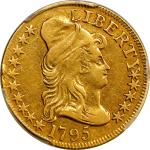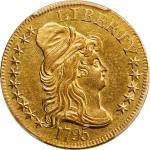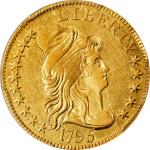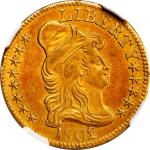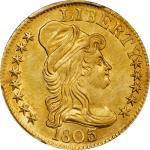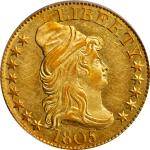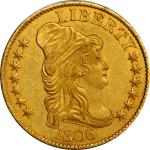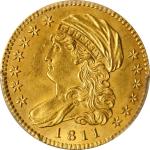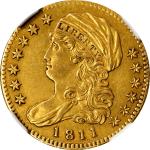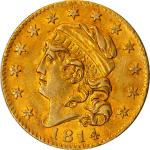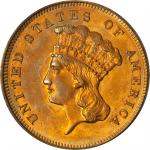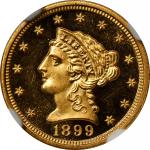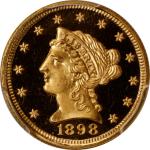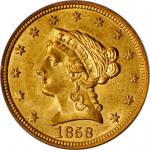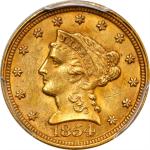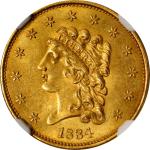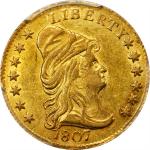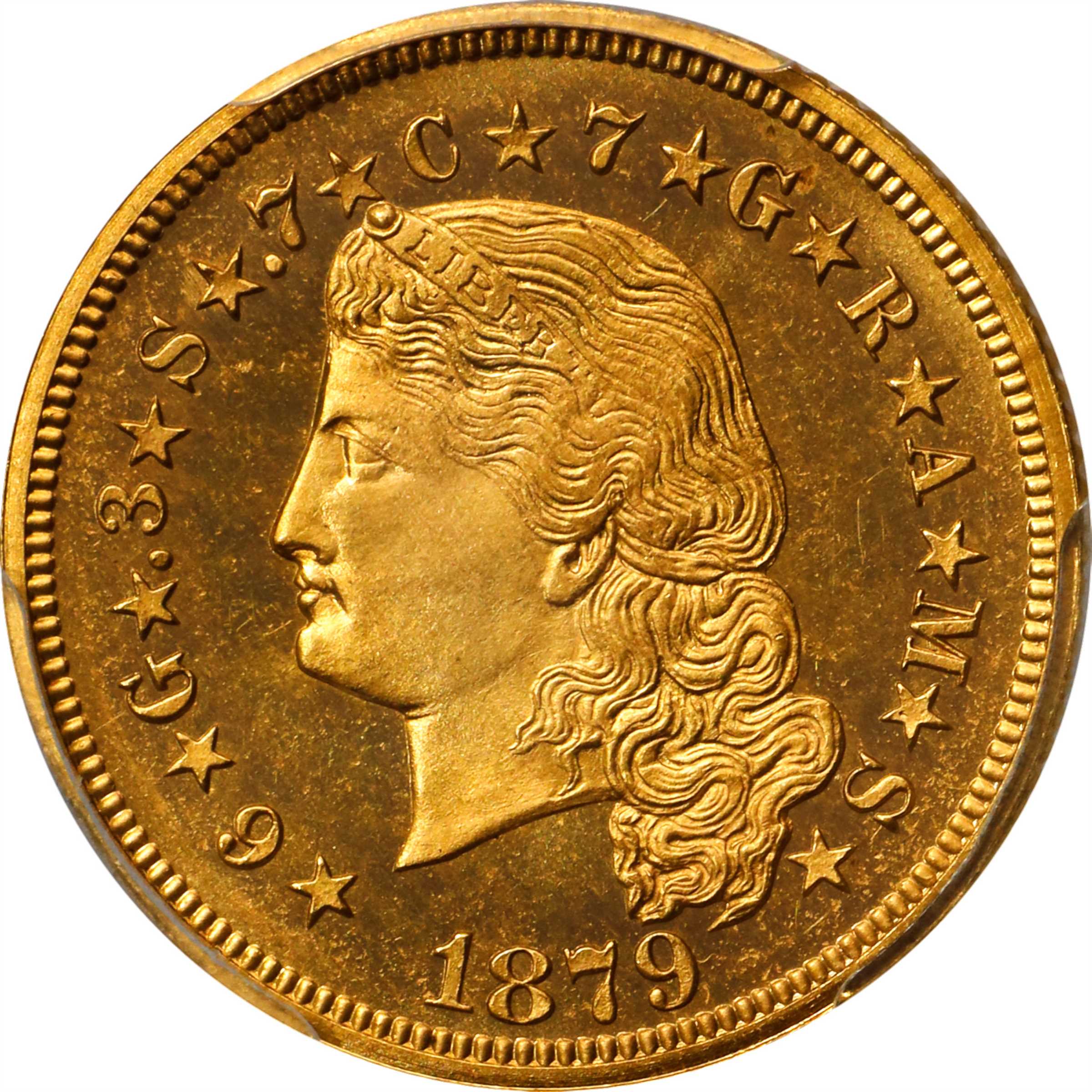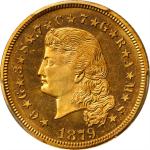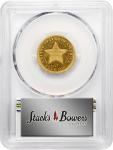1879 Four-Dollar Gold Stella. Flowing Hair. Judd-1635, Pollock-1833, JD-1. Rarity-3. Gold. Reeded Edge. Proof-65 (PCGS). CAC. <strong>Obv:</strong> The Flowing Hair design by Charles E. Barber. Head of Liberty with flowing hair faces left with the date 1879 below. Liberty is wearing a coronet inscribed LIBERTY, and the inscription * 6 * G * .3 * S * .7 * C * 7 * G * R * A * M * S * encircles the border. <strong>Rev:</strong> Five-pointed star, or Stella, is inscribed with the denominations ONE STELLA and 400 CENTS. The Latin mottoes E PLURIBUS UNUM and DEO EST GLORIA are above and below the star, respectively. The legend UNITED STATES OF AMERICA is inscribed along the upper border, and another expression of the denomination FOUR DOL. is inscribed along the lower border. This is a supremely attractive Gem Proof with warm golden-orange color. Sharply struck overall with expertly preserved surfaces, few four-dollar gold coins of either date or type possess the superior quality and strong eye appeal embodied in this captivating specimen.<p>The story of the four-dollar gold Stellas of 1879 and 1880 begins with the desire in certain government circles to create an international coinage system that would be readily recognized and accepted throughout the world. Although it had surfaced earlier, this idea gained its greatest momentum in 1879 through the efforts of John A. Kasson, the United States minister plenipotentiary to the Austro-Hungarian Empire and a former chairman of the Congressional Committee on Coinage, Weights and Measures. Kasson urged the federal government to consider creation of a four-dollar gold coin as the basis for a new international monetary system. In Kassons opinion, a four-dollar gold coin struck in the United States Mint would more closely approximate in value the more widely used and accepted gold coins of several European countries, including Austrias 8 florins, the Dutch 8 florins, Frances 20 francs, Italys 20 lire and Spains 20 pesetas.<p>Throwing his weight behind Kassons proposal, serving chairman of the Committee on Coinage, Weights and Measures, Alexander H. Stephens, wrote to Secretary of the Treasury John Sherman requesting that the Mint prepare pattern four-dollar gold pieces for evaluation by Congress. The Mint eventually prepared two different proposed designs, a flowing hair motif by Charles E. Barber and a coiled hair design by George T. Morgan. The Barber Flowing Hair type was used to prepare only 25 (and possibly as few as 15) examples for distribution to Congressional leaders. Those coins are dated 1879 and, per traditional numismatic wisdom, were struck in a metric alloy of 85.71% gold, 4.29% silver and 10.00% copper.<p>Demand among Congressional and other government officials for examples of the proposed four-dollar gold Stella proved so great, however, that the Mint eventually prepared perhaps as many as 700 additional specimens in early 1880, still using the 1879-dated Flowing Hair dies. These pieces are struck in standard alloy of 90.00% gold, 10.00% copper on shaved half eagle planchets (per the website <em>us.patterns.com</em>) and, as with their predecessors produced in 1879, were used for presentation and other official purposes as well as for numismatists. Despite its popularity with Congressional leaders and other contemporary politicians, in the end the four-dollar gold Stella failed to gain authorization for regular issue production and the project ended.<p>As a "type coin," the 1879 Flowing Hair Stella is a significant numismatic rarity, even more so from a market availability standpoint given the strong demand it generates among advanced collectors. For although technically a pattern (as the four-dollar gold denomination was never authorized for regular issue production), the Stella has long been collected as an integral part of a complete type set of classic United States Mint gold coinage. Its popularity is such that the denomination has been ranked 16th in the fifth (2019) edition of <em>100 Greatest U.S. Coins</em> by Jeff Garrett and Ron Guth.<p>All Stellas were struck as Proofs, but because many of the surviving examples were once used as pocket pieces or set into jewelry, they often appear as if they have seen very heavy circulation. Many are damaged with filed rims, scratches, and wear commensurate with long service in necklaces. The present coin is a noteworthy exception. Carefully preserved through the years with not even the barest signs of mishandling, the acquisition of this Gem Proof Stella would be an impressive numismatic achievement for any advanced collector. PCGS# 8057. NGC ID: 28AZ. From the Mocatta Collection.

